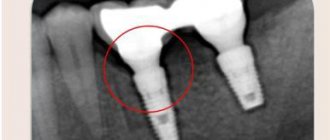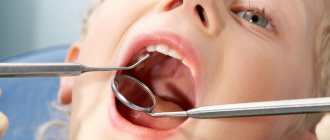- Outpatient department
Outpatient department » - Gastroenterology
Gastroenterology »
- About the direction
About the direction »
- Gastritis: symptoms, diagnosis and treatment
Gastritis is perhaps the most common disease of the gastrointestinal tract. Almost every second resident of our country suffers from it. That is why it is so important to know the first signs and symptoms of this disease in order to start treatment on time and not neglect your health.
Gastritis (from the Latin gastritis, from the ancient Greek γαστήρ (gaster) - “stomach” + -itis inflammatory or inflammatory-dystrophic changes in the mucous membrane) is a collective concept that is used to refer to various inflammatory and dystrophic changes in the gastric mucosa. Damage to the mucous membrane can be primary, considered as an independent disease, caused by poor nutrition, and secondary, caused by other infectious and non-infectious diseases or intoxication.
Types of gastritis
Acute gastritis
In modern medicine, there are several types of acute gastritis:
Simple (catarrhal) gastritis develops as a result of ingestion of stale food contaminated with pathogenic microbes (foodborne toxic infection), rotavirosis, allergies, or as a result of damage to the gastric mucosa by medications. With catarrhal gastritis, the surface layer of the mucous membrane is destroyed, which is quickly restored after the cessation of the irritating factor.
Corrosive (erosive) gastritis. This type of gastritis develops after concentrated acids or alkalis enter the stomach, which corrode the gastric mucosa. In this case, not only the superficial, but also the deep layers of the gastric mucosa are destroyed, so this form of the disease often gives rise to peptic ulcers or the formation of scars.
Phlegmonous gastritis is a purulent inflammation of the stomach that can develop as a result of penetration of a foreign object (for example, a fish bone) into the stomach wall with subsequent infection of this area. A distinctive feature of this type of gastritis is high fever and unbearable pain in the epigastric region. Phlegmonous gastritis requires immediate surgical intervention, as it can develop into peritonitis (extensive inflammation of the abdominal organs) and be fatal.
Fibrinous gastritis. It occurs very rarely against the background of sepsis (blood poisoning).
With proper treatment, acute gastritis (depending on the form) lasts up to 5 - 7 days, but complete recovery of the stomach occurs much later.
Often acute gastritis can become chronic.
Chronic gastritis
Chronic gastritis can develop as a consequence of acute gastritis or as an independent disease. Its danger lies in the fact that it can occur for a long time without showing any symptoms.
In the development of the disease, as a rule, there are periods of exacerbation and remission. During periods of exacerbation of chronic gastritis, short-term attacks of pain, discomfort in the upper abdomen, a feeling of heaviness, nausea after eating, and heartburn may appear, which indicates a dysfunction of the natural “valves” of the stomach and the reflux of acidic stomach contents into the esophagus.
A characteristic feature of chronic gastritis is the gradual growth of connective tissue in the gastric mucosa, replacing the cells that produce gastric juice (atrophy of the gastric mucosa). Chronic gastritis is often accompanied by a decrease in the production of gastric juice and acid (hypoacid gastritis).
Helicobacter pylori infection, which parasitizes the stomach, disrupts the renewal processes of the mucous membrane; thus, when old cells die, new ones cannot be formed. This leads to gradual degradation of the gastric mucosa with loss of function of the glands that produce gastric juice.
Causes of nausea
Nausea can occur for a variety of reasons, ranging from gastroenteritis caused by a viral infection (a common but self-limiting condition in young children) to morning sickness in early pregnancy. Nausea can be caused by medications, overeating, or migraines. In some cases, this symptom may indicate serious and sometimes life-threatening conditions: appendicitis, kidney disease, liver disease, central nervous system disease, heart attack, brain tumor.
Other causes of nausea include:
- motion sickness in transport, including on water (kinetosis);
- benign paroxysmal positional vertigo (BPPV);
- Meniere's disease;
- food poisoning;
- rotavirus and other infections;
- coronavirus infection (COVID-19);
- ear infections;
- meningitis;
- gastroesophageal reflux disease (GERD);
- stomach ulcer;
- Crohn's disease;
- irritable bowel syndrome;
- pancreatitis;
- pancreas cancer;
- decreased activity of the muscular apparatus of the stomach (gastroparesis);
- intussusception in children;
- pyloric stenosis in infants;
- allergy to cow's milk protein;
- intestinal obstruction;
- stress, fears, generalized anxiety disorder, depression;
- anorexia, bulimia;
- vestibular neuronitis;
- alcohol abuse;
- exposure to chemicals;
- cholecystitis;
- cholelithiasis;
- acute liver failure;
- hepatitis;
- diabetic ketoacidosis;
- heart failure, heart attack;
- hyperthyroidism;
- hypoparathyroidism, hyperparathyroidism;
- intracranial hematoma;
- chemotherapy, radiation therapy.
Causes of gastritis
The main causes of gastritis are:
- poor nutrition;
- hasty eating and poorly chewed food or dry food;
- eating food that is too hot or too cold;
- eating savory foods (mostly spicy and highly salted);
- smoking;
- alcohol consumption;
- stress;
- infection with the microbe Helicobacter pylori;
- chewing gum on an empty stomach.
Xerostomia: causes
As a rule, the causes of xerostomia are “hidden” not in the salivary glands themselves, but in a disease of any system of the body or a general infectious disease. This condition is mainly caused by:
- Infectious diseases: tonsillitis, tuberculosis, HIV, tonsillitis, mumps (aka “mumps”, an infectious disease of the parotid salivary glands).
- Hypertension or severe iron deficiency anemia.
- Rheumatoid arthritis, as well as some diseases of the endocrine system: thyrotoxicosis (occurs when the thyroid gland is damaged), diabetes mellitus (develops when the function of the pancreas is impaired), sialadenitis (inflammation of the salivary glands themselves).
- Head or neck injuries, constant mouth breathing due to injury to the nose or the formation of polyps in the sinuses.
- Long-term use of certain groups of medications, dehydration with prolonged fever or vomiting.
- Bad habits: drinking alcohol, smoking, drug use.
The functions of the salivary glands are not necessarily impaired in all of these diseases and conditions, but if a person has xerostomia, they will be considered as possible causes.
Symptoms of gastritis
So, how can you recognize that you have begun to develop gastritis? It is worth listening to your body and analyzing why pain bothers you, at what time it occurs and how often it happens.
Symptoms of gastritis:
- abdominal pain: sharp paroxysmal or constant painful;
- nausea is constant or intermittent, often occurring immediately after eating;
- heartburn;
- belching with a sour smell;
- repeated vomiting (in the case of acute gastritis, vomiting with blood is possible, since internal bleeding may open in the stomach);
- increased salivation;
- sometimes dry mouth;
- bowel dysfunction: constipation or diarrhea;
- from the whole body: severe general weakness, dizziness, headache, sweating, increased temperature, decreased blood pressure, increased heart rate - tachycardia;
- decreased appetite;
- unpleasant taste in the mouth;
- feeling of heaviness in the stomach after eating;
- bloating, rumbling in the stomach, flatulence;
- anemia, brittle and dry hair, split nails.
Causes of dry mouth
Both certain physiological factors and various pathological conditions lead to subjectively felt drying of the epithelium. Natural causes of dry mouth are the consumption of pickles, herring, and other foods containing a lot of salt. Drying of the mucous membranes occurs when there is insufficient humidity in the room. Dryness of the mouth of varying intensity, associated with sympathetic release, is possible during conflicts, quarrels, fear, and chronic stress.
Sialadenitis
The most common cause of severe xerostomia is inflammation of the salivary glands. The pathological process is initially one-sided, but after a few days the inflammation spreads to the opposite side. Patients complain of swelling in the area of the salivary glands, increased body temperature, and painful opening of the mouth. Eating is difficult due to pain and dryness of the epithelium, which is caused by the cessation of secretion from the affected gland. Chronic sialadenitis is characterized by moderate pain and normal size of the salivary gland.
Other diseases of the salivary glands
Complaints of dry mouth are made by patients with mumps, a viral infection that primarily affects the parotid salivary glands in children, and less commonly, the submandibular and sublingual glands. The symptom is combined with general intoxication, pain and swelling of the glands on both sides, deforming the contours of the patient’s face. Severe xerostomia with high temperature, swelling, hyperemia in the area of inflammation are symptoms of a salivary gland abscess, complicating the course of sialadenitis and sialolithiasis.
Sjögren's disease
Dryness of the oral mucosa against the background of insufficient secretion of tear fluid, burning in the eyes, drying and peeling of the skin is typical for autoimmune damage to the glands in Sjögren's disease. The normal secretion of saliva is prevented by the infiltration of the ducts by lymphocytes and plasma cells, an autoimmune reaction with the formation of antibodies to the glandular epithelium. The parotid glands usually increase symmetrically in size; upon examination of the mouth, bright pink redness of the mucous membrane, contact bleeding, folded tongue, and multiple caries are revealed.
Diseases of the oral cavity and nasopharynx
The close location of all anatomical structures, general innervation and blood supply cause disruption of the salivary glands when various organs of the oropharynx and nasopharynx are affected. Dryness of the epithelium is observed during inflammatory processes, some rare pathological conditions - glossalgia, parotid fistula, galvanosis. Common causes of xerostomia are:
- Stomatitis
. With an inflammatory process in the oral cavity, dryness is combined with pain when eating, bad breath, and bleeding. The catarrhal form is characterized by redness and swelling; in the aphthous form, blisters and erosions form. With allergic stomatitis, hyperemia, ulcers, and erosions are determined. In older people, prosthetic stomatitis is possible. - Candidiasis
. When epithelial cells are damaged by fungi of the genus Candida, a white coating appears on the tongue and mucous membranes of the cheeks, a burning sensation and severe dry mouth are disturbing. Cracked lips are typical. The disease should be distinguished from hairy leukoplakia, which has a similar clinical picture, but affects patients with immunodeficiencies when exposed to a virus. - Hypertrophic rhinitis
. When the epithelial layer of the nasopharynx is thickened and the airways are partially blocked, patients breathe predominantly through the mouth, especially at night. This leads to severe dryness, which reaches its maximum intensity in the morning. A similar mechanism for the development of xerostomia is observed in nasopharyngeal cancer.
Infectious diseases
The appearance of dry mouth is characteristic of intestinal infections, especially those accompanied by watery diarrhea and leading to severe dehydration. Xerostomia is pathognomonic for cholera, a gastrointestinal form of salmonellosis. It is possible to identify a symptom during the febrile period of other infectious pathologies - brucellosis, psittacosis, Crimean fever. The oral mucosa dries out during the polyuric stage of hemorrhagic fever with renal syndrome, which is caused by dehydration due to the release of up to 5 liters of urine per day.
Diabetes mellitus (DM)
Xerostomia with thirst and polyuria is a specific symptom. In patients with type 1 diabetes, microangiopathies and elevated blood glucose levels are predisposing factors to dry mouth. In elderly patients with insulin-dependent diabetes, the symptom is considered a manifestation of diabetic polyneuropathy. In addition to dry mouth, the patient is concerned about constant weakness, itchy skin, rashes, pustules, and fungal skin infections. Similar symptoms occur with steroid diabetes.
Neurological dysfunction
The prerequisites for dryness of central origin are considered to be incoordination of the nervous system, disruption of connections between higher cortical structures and the vegetative nuclei of the medulla oblongata. The symptom is observed in patients with neuroses, panic attacks, and organic anxiety disorder. Drying of the oral mucosa is characteristic of peripheral autonomic failure and polyneuropathy of pregnancy. Xerostomia develops in Lambert-Eaton syndrome, an autoimmune disease that affects the presynaptic membranes of neurons.
Gastroenterological diseases
Dry mouth is a common sign of damage to the pancreas. In case of fibrosis of the organ, it is caused by secondary diabetes; in case of pancreatitis and a split pancreas, it is caused by digestive disorders. The symptom is detected in chronic gastritis and is combined with epigastric pain, stool instability, nausea and vomiting. Dryness, which is accompanied by pain in the right hypochondrium, a feeling of bitterness in the mouth, nausea, often becomes a sign of hepatitis.
Urological pathology
In diseases of the urinary system, dry mouth is usually caused by two mechanisms: dehydration due to polyuria and the accumulation of toxic protein compounds in the bloodstream. With renal colic caused by obstruction of the ureter or pyelocaliceal system, the situation is aggravated by pain with a pronounced sympathoadrenal reaction. In this condition, in addition to dry mouth, unbearable pain in the lower back, nausea and vomiting, and painful tenesmus are disturbing.
Often, xerostomia is provoked by nephrosclerosis, polycystic disease, and other severe kidney diseases with increasing chronic renal failure. The combination of dryness with swelling and lower back pain is characteristic of nephritic syndrome of various etiologies. Drug-induced nephropathy is often accompanied by drug-induced xerostomia. The feeling of dry mouth is typical of paraneoplastic nephropathy, which occurs with severe metabolic and immunological disorders.
Intoxication
Xerostomia in case of exogenous poisoning and endotoxemia is provoked by disruption of all body systems, discoordination of the nervous and humoral regulation of salivary secretion processes. In case of foundry fever and other poisonings involving inhalation of aggressive substances, the situation is aggravated by the direct damaging effect of vapors on the oral mucosa. The prerequisites for dry mucous layer are:
- Bad habits.
Xerostomia is observed during hangover syndrome, which is caused by severe intoxication of the body. The symptom is also typical of nicotine addiction, in which it is caused by constant irritation of the epithelium with cigarette tar. Dry mouth in combination with convulsions and hyperthermia can be a sign of poisoning with alcohol surrogates. - Cathinone abuse
. Abuse of norepinephrine provokes an increase in the activity of the sympathetic division of the autonomic nervous system, which is manifested by dilated pupils, dry mucous membranes, and psychomotor agitation. Over time, the euphoric effects of taking the drug decrease, and encephalopathy increases.
In cancer cachexia, xerostomia occurs as a result of gross disturbances in the functioning of the body caused by endogenous intoxication by tumor metabolic products and decaying cancer cells. The condition is accompanied by dyspeptic disorders, exhaustion, severe anemia, changes in emotional and mental status, and insomnia. Dry mouth worries patients with massive intoxication of the body by tissue decay products during gangrene.
Metabolic and endocrine disorders
The secretion of saliva has not only nervous but also humoral regulation. Various deviations from normal levels of hormones and biologically active substances cause disturbances in the functioning of all organs, including the salivary glands. The appearance of dry mouth mucosa is associated with secondary fluid losses that develop due to disturbances in water-salt metabolism and homeostasis. Xerostomia is potentiated by endocrine disorders such as:
- Algodismenorrhea
. Painful menstruation can occur at different ages, but most often dysmenorrhea is diagnosed in adolescents during the period of formation of sexual function. Complaints of dry mouth are due to the increased influence of prostaglandins on the level of salivation. With algodismenorrhea, pain is accompanied by dyspeptic disorders and asthenia. - Hypercalcemic crisis
. Xerostomia in this disorder is associated with dehydration accompanied by polyuria, repeated vomiting and diarrhea. An increase in calcium levels is manifested by abdominal cramps, muscle weakness, and severe thirst. Similar symptoms occur in Burnett syndrome, a dysmetabolic pathology with hypercalcemia and metabolic alkalosis. - Hypovitaminosis
. The combination of angular cheilitis and dry lips and oral cavity is typical for pyridoxine (vitamin B6) deficiency. For hypovitaminosis, a change in the appearance of the tongue is specific - it becomes bright red with a shiny “varnish” surface due to atrophic processes in the epithelial layer. - Pheochromocytoma
. With a tumor of the adrenal medulla, dry mouth is caused by increased endocrine function with a significant increase in the level of adrenaline and norepinephrine in the blood. These substances enhance the activity of the sympathetic nervous system, which inhibits the secretion of the salivary, gastric and intestinal glands.
Acute and emergency conditions
Xerostomia in critical conditions is caused by several mechanisms: severe dehydration, disturbances of neurohumoral regulation, reflex reactions due to excessive irritation of pain receptors. These pathologies are typically characterized by a severe and extremely serious condition of the patient, dysregulation of basic vital functions. The patient requires emergency medical care. Dry mouth is caused by:
- Bleeding
. Dryness of the oral mucosa during blood loss is promoted by significant dehydration of the body. The leading signs are pale skin, tachycardia, and a drop in blood pressure. The symptom develops both with internal bleeding and as a result of external blood loss. Ruptures of aneurysms of the renal and other arteries, leading to collapse, are life-threatening. - Acute abdomen syndrome
. Xerostomia is considered one of the manifestations of catarrhal appendicitis and other surgical conditions - obstetric peritonitis, biliary peritonitis, mesadenitis. The sign is pathognomonic for the initial phase of paralytic intestinal obstruction. Dry mouth is combined with severe abdominal pain and symptoms of peritoneal irritation. - Cardiovascular pathology
. The appearance of xerostomia is associated with autonomic reactions to severe pain in the heart or severe hemodynamic disturbances. Dry mouth is observed during hypertensive crisis and angina pectoris. The symptom is accompanied by headaches, blurred vision, and disturbances of consciousness. - Traumatic shock
. Symptoms of massive soft tissue injuries and bone fractures are explained by gross changes in autonomic reactions and a collapsing state due to severe pain. Pronounced pallor of the skin and mucous membranes, xerostomia, cold sweat. Impaired consciousness and lethargy are possible. - Fainting
. The post-syncope period of syncope is characterized by dry mouth and hyperhidrosis caused by dysfunction of the autonomic nervous system. A similar mechanism for the occurrence of symptoms is observed after sunstroke. In this case, in addition to dry mouth, intense headaches, flashing “spots” before the eyes, and increased breathing are observed.
Diagnosis of gastritis
Today, the main way to determine gastritis is fibrogastroduodenoendoscopy or FGDS, which consists of studying the condition of the inner surface of the stomach using a probe, as well as a biopsy - removing a small fragment of tissue for examination.
FGDS makes it possible not to confuse gastritis and ulcer and to determine the type of disease: erosive or non-erosive.
Also, a gastroenterologist, to make a correct diagnosis, may prescribe the following tests:
- General blood analysis.
- Fecal occult blood test.
- Histological examination of a biopsy specimen of the gastric mucosa.
- Cytological examination of a biopsy specimen of the gastric mucosa.
- Two tests for the determination of H. pylori.
- Blood chemistry.
- General urine analysis.
Diet for gastritis
For gastritis with low acidity
Can:
- boiled lean meat: chicken, rabbit;
- meat broths;
- lean fish: pink salmon, hake, cod;
- vegetables in the form of puree or grated: carrots, potatoes, green peas, beets;
- ground fruits, compotes and jelly from apples, raspberries and strawberries;
- porridge (oatmeal, semolina, rice);
- low-fat cottage cheese, milk;
- only squeezed cabbage juice;
- alkaline mineral waters, for example Borjomi (1 glass an hour before meals).
It is forbidden:
- hot and spicy dishes;
- canned food;
- mustard;
- pepper;
- onion;
- hot sauces.
For gastritis with high acidity
Can:
- pureed vegetarian soups;
- dairy products;
- lean fish and boiled meat;
- scrambled eggs;
- porridge, jelly, jelly;
- vegetable purees;
- compotes from fresh (not sour) fruits;
- carrot juice;
- White bread.
It is forbidden:
- coffee and strong tea;
- meat broths;
- smoked meats;
- mustard;
- onion;
- garlic.
For all types of gastritis, split meals are very important - 5-6 times a day.
Gastritis (from the Latin gastritis, from the ancient Greek γαστήρ (gaster) - “stomach” + -itis inflammatory or inflammatory-dystrophic changes in the mucous membrane) is a collective concept used to refer to inflammatory and dystrophic changes in the gastric mucosa of different origins and course. Damage to the mucous membrane can be primary, considered as an independent disease (due to poor nutrition), and secondary, caused by other infectious and non-infectious diseases or intoxication.
Gastritis is perhaps the most common disease of the gastrointestinal tract. Almost every second resident of our country suffers from it.
If you are really looking for your doctor...











